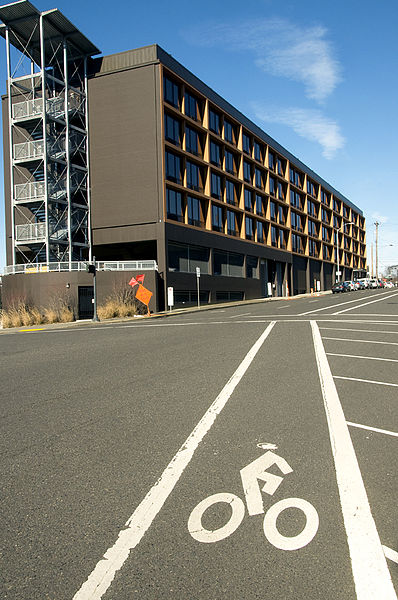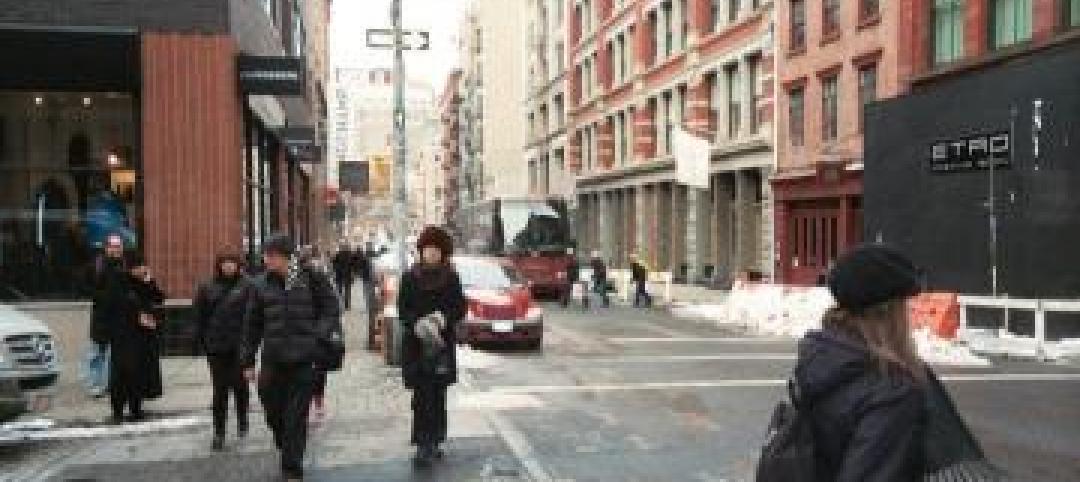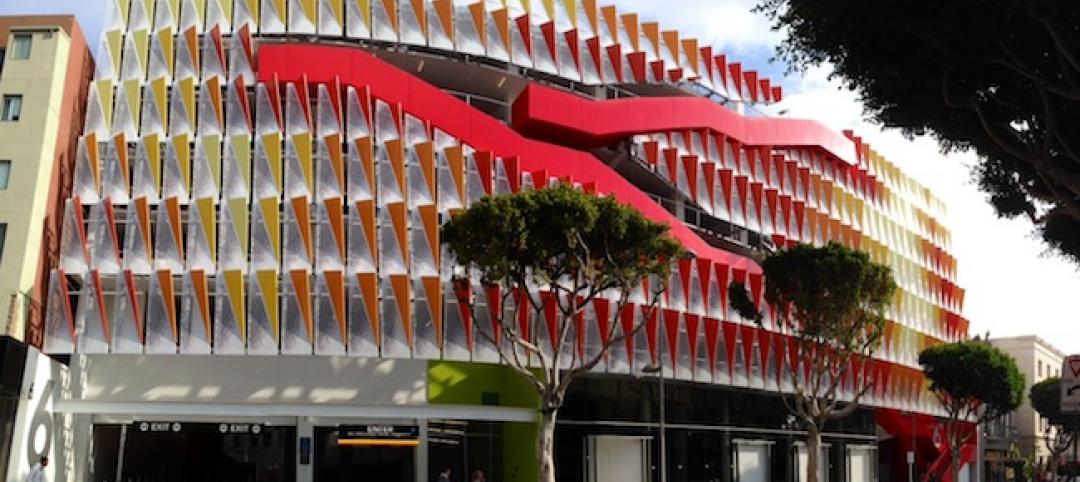By the end of 2014, the Federal Highway Administration (FHWA) will release guidelines on designing protected bike lanes. Until recently, the U.S. DOT's policy on bicycling was essentially to adhere to manuals such as AASHTO's Green Book and FHWA's Manual on Uniform Traffic Control Devices (MUTCD).
But last year, the FHWA released a new strategic plan that put an emphasis on bicyclist and pedestrian safety, and on the need to create connected walking and biking networks for all ages and abilities.
FHWA Secretary Anthony Foxx, installed in 2013, has made bicyclist and pedestrian safety a key issue of his administration. Last year, the FHWA also endorsed "design flexibility" for the first time, encouraging engineers to look to new sources for pedestrian-friendly design ideas.
Moving into the future, the agency will do even more for the issue, Streetsblog reports, starting with the FHWA manual on protected bike lanes. The guidelines will cover the pros and cons of different intersection designs, one- versus two-way lanes, and different types of protection. It will also include a call to action, urging cities to implement protected bike lanes and to collect before-and-after data when they do.
“One conclusion to draw from our effort is that, yes, separated bike lanes are part of the toolbox that you can use to create and connect bike networks,” said FHWA's Dan Goodman, “and that’s where we’re going.”
Related Stories
| Jun 20, 2014
Sterling Bay pulled on board for Chicago Old Main Post Office project
Sterling Bay Cos. and Bill Davies' International Property Developers North America partner up for a $500 million restoration of Chicago's Old Main Post Office
| Jun 18, 2014
Study shows walkable urbanism has positive economic impact
Walkable communities have a higher GDP, greater wealth, and higher percentages of college grads, according to a new study by George Washington University.
| Jun 18, 2014
Arup uses 3D printing to fabricate one-of-a-kind structural steel components
The firm's research shows that 3D printing has the potential to reduce costs, cut waste, and slash the carbon footprint of the construction sector.
| Jun 16, 2014
6 U.S. cities at the forefront of innovation districts
A new Brookings Institution study records the emergence of “competitive places that are also cool spaces.”
| Jun 12, 2014
Austrian university develops 'inflatable' concrete dome method
Constructing a concrete dome is a costly process, but this may change soon. A team from the Vienna University of Technology has developed a method that allows concrete domes to form with the use of air and steel cables instead of expensive, timber supporting structures.
| Jun 5, 2014
International Parking Institute names best new parking structures
Winners include garages that are architectural delights, an airport's canopied parking atrium, and an environmentally friendly garage under America's oldest park.
| Jun 2, 2014
Parking structures group launches LEED-type program for parking garages
The Green Parking Council, an affiliate of the International Parking Institute, has launched the Green Garage Certification program, the parking industry equivalent of LEED certification.
| May 29, 2014
7 cost-effective ways to make U.S. infrastructure more resilient
Moving critical elements to higher ground and designing for longer lifespans are just some of the ways cities and governments can make infrastructure more resilient to natural disasters and climate change, writes Richard Cavallaro, President of Skanska USA Civil.
| May 20, 2014
Kinetic Architecture: New book explores innovations in active façades
The book, co-authored by Arup's Russell Fortmeyer, illustrates the various ways architects, consultants, and engineers approach energy and comfort by manipulating air, water, and light through the layers of passive and active building envelope systems.
| May 19, 2014
What can architects learn from nature’s 3.8 billion years of experience?
In a new report, HOK and Biomimicry 3.8 partnered to study how lessons from the temperate broadleaf forest biome, which houses many of the world’s largest population centers, can inform the design of the built environment.















